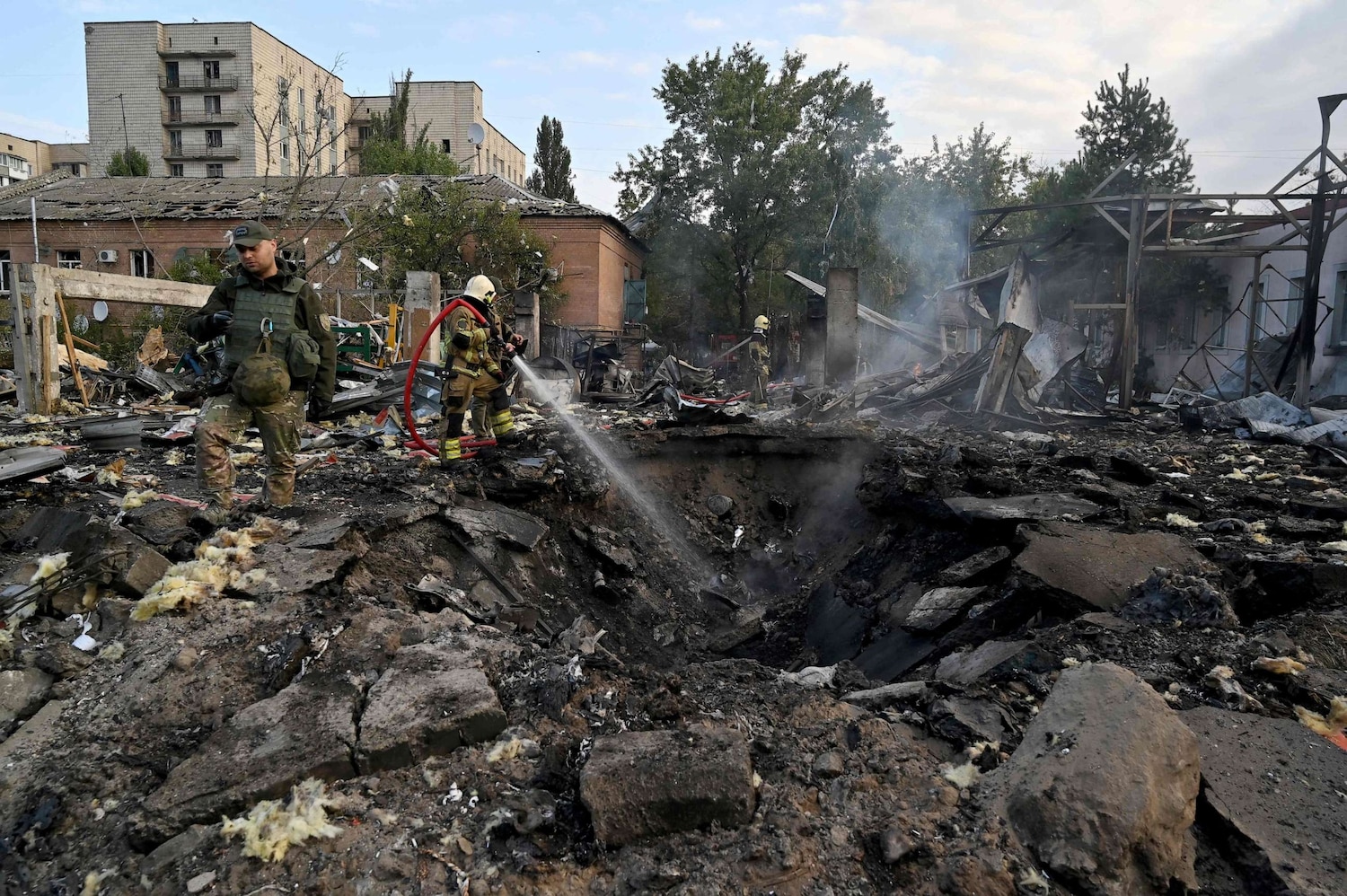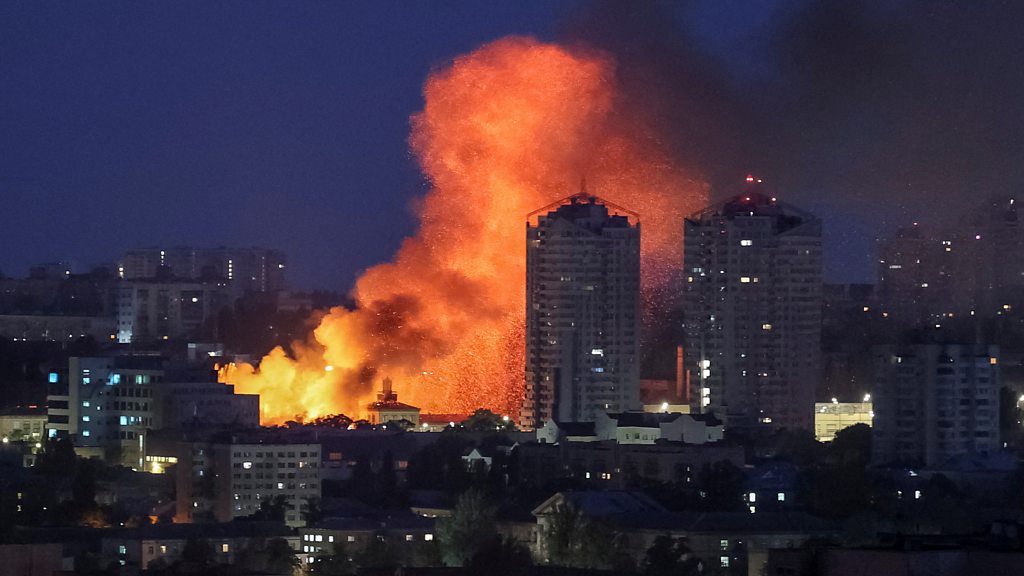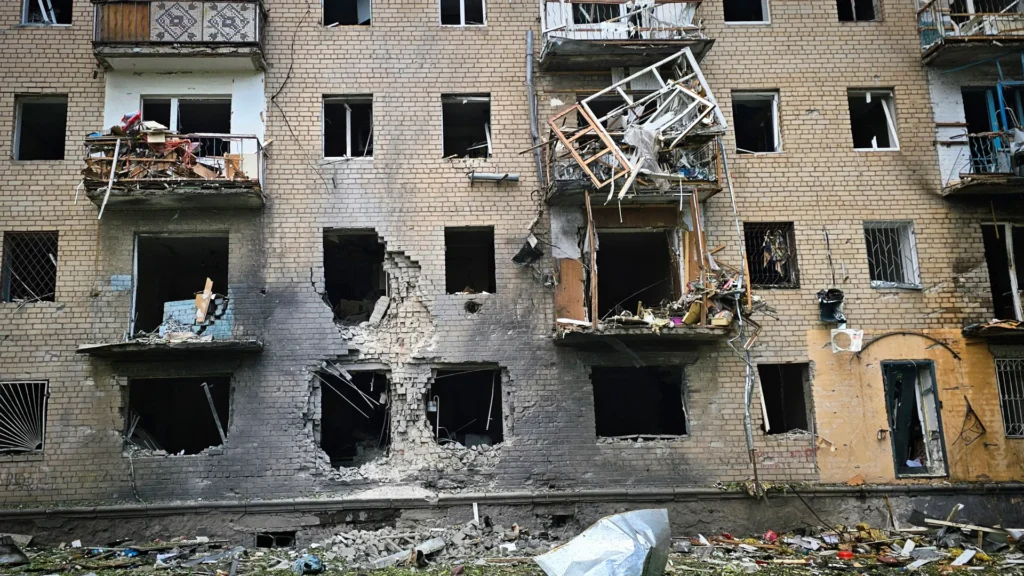KYIV — Russia launched a large-scale overnight wave of missile and drone attacks across Ukraine, targeting energy infrastructure and residential areas, Ukrainian officials confirmed.
Attacks left at least six civilians dead and caused widespread power outages, threatening millions with a winter without electricity or heating.
Civilian Casualties and Widespread Damage
The coordinated assault struck 25 sites nationwide, including Kyiv, highlighting the strategic focus on Ukraine’s energy network.
- In Dnipro, a missile hit an apartment building, killing two people and injuring 12.
- Three additional deaths were reported in Zaporizhzhia.
- Prime Minister Yulia Svyrydenko confirmed via Telegram that critical energy installations were destroyed in Poltava, Kharkiv, and Kyiv regions. Restoration efforts are ongoing.
- The Ukrainian Energy Ministry verified power outages in Dnipropetrovsk, Chernihiv, Zaporizhzhya, Odessa, and Kirovohrad.
Authorities warned that winter temperatures and prolonged blackouts could worsen the humanitarian impact, particularly for the elderly, children, and vulnerable households.

Scale of the Attack
The Ukrainian air force reported that Russia deployed over 450 drones and 45 missiles, with Ukrainian forces intercepting 406 drones and nine missiles. The Russian defence ministry claimed it shot down 79 Ukrainian drones overnight but provided no further verification.
Kyiv maintains that the attacks target civilian morale and economic infrastructure, contradicting Russian claims that the strikes were limited to military objectives.
Fourth Winter of War
This marks the fourth winter of Russia’s full-scale invasion. Analysts say the pre-winter strikes are intended to disrupt Ukraine’s economy, weaken civilian morale, and strain emergency services.
Millions of Ukrainians are now at risk of living without heating, electricity, or water during the cold months. Humanitarian agencies are mobilising temporary shelters, generators, and food supplies to mitigate the crisis.
Human Impact in Affected Cities
In Zaporizhzhia, residents reported hours-long power outages and damaged buildings. Local hospitals operated on emergency power, and schools were closed in some districts. In Dnipro, emergency crews evacuated affected buildings and treated dozens injured by falling debris.
Civilian reports describe widespread fear and disruption, with many residents leaving cities temporarily for safer areas.
Strategic Implications
Military analysts suggest that targeting energy infrastructure is a deliberate tactic by Moscow to exert pressure on both civilians and the Ukrainian government. The attacks also demonstrate Russia’s growing reliance on long-range drones and missile systems capable of striking urban centres.

Sanctions Debate Reignites
The strikes coincided with a renewed debate over Western sanctions on Russian energy. President Volodymyr Zelensky said the attacks underscore the importance of keeping sanctions strict and uniform, with no exemptions for any country.
Hours before the strikes, the United States granted Hungary a one-year exemption on Russian energy imports following a visit from Prime Minister Viktor Orban. Ukrainian officials argued that revenue from these sales directly funds Russia’s military operations.
Zelensky Calls for Action
On Telegram, Zelensky urged an immediate international response:
“For every Moscow strike on energy infrastructure aimed at harming ordinary people before winter, there must be a sanctions response targeting all Russian energy, with no exceptions. Ukraine expects relevant decisions from the US, Europe, and the G7.”
The president highlighted that exemptions, even temporary ones, effectively support attacks on civilian populations.
International Response
Western nations condemned the attacks, pledging support for Ukraine through intelligence-sharing, humanitarian aid, and additional sanctions. Observers noted that the strikes may influence broader EU and NATO decisions regarding energy dependency and security policies.
Economic Consequences
Analysts warned that repeated damage to Ukraine’s energy grid could have long-term economic consequences, slowing industrial production, disrupting supply chains, and increasing civilian hardship. Ukraine’s winter electricity consumption peaks during December and January, making restoration critical.
Humanitarian Efforts
Aid organisations and local authorities have activated emergency response units, providing heating centres, temporary shelters, and food assistance. Emergency crews continue to repair power lines and restore essential services.
Military Analysis
Experts say Russia’s campaign against Ukraine’s energy infrastructure is strategic, aiming to force Ukraine to divert military and civil resources away from counteroffensives. The attacks demonstrate Russia’s capability to conduct simultaneous drone and missile operations across multiple regions.
Looking Ahead
Officials in Kyiv warned that similar attacks could continue as winter approaches. Preparations include reinforcing power infrastructure, pre-positioning generators, and coordinating civil defence measures.
Civilian Preparedness
Authorities have advised residents to store fuel, maintain battery power, and avoid non-essential travel during ongoing strikes. Communities are urged to follow official evacuation and safety guidance to minimise casualties.
Political Ramifications
The strikes may also influence international diplomacy, particularly discussions about sanctions, energy imports, and financial support for Ukraine. Experts warn that loopholes or exceptions in sanctions could have immediate, tangible consequences on the ground.
Long-Term Resilience
Despite repeated attacks, Ukrainian authorities and citizens continue to demonstrate resilience. Analysts note that the ability to restore services and maintain civilian morale will be key to Ukraine’s endurance through the winter months.
This report complies with M10News Editorial Standards for factual accuracy and originality. © 2025 M10News.


